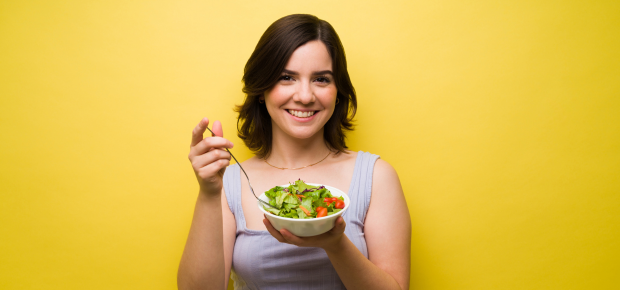
If you're tired of diets that feel like punishment—think bland shakes, endless calorie counting, and saying goodbye to your favourite foods—the PHATT diet might just be the refreshingly realistic approach you've been searching for. Short for "Putting Health At The Top," PHATT is an Australian-born program that focuses on healing your gut, eating real food, and losing weight in a sustainable way.
What is the PHATT diet?
Developed in Western Australia, the PHATT program is more than just a diet—it's a lifestyle overhaul designed to reset your gut health and support long-term weight loss. Unlike many fad diets, PHATT doesn't rely on meal replacements or extreme restrictions.
Instead, it emphasises whole foods, personalised mentorship, and a structured three-step plan to help you achieve and maintain your health goals.
The three phases of PHATT
The PHATT program is structured into three distinct phases, each building upon the last to promote lasting health benefits:
1. Activate (Days 1–3)
This initial phase focuses on eliminating sugars and refined carbohydrates to begin healing your gut. You'll consume approved whole foods and start taking nutritional supplements to support your body's transition.
2. Transform (Days 4–30+)
In this phase, your body enters a detox and fat-burning state. Meals are calorie-controlled, but the program provides easy-to-follow plans and approved food lists to keep things simple. Supplements continue to play a crucial role in maintaining energy levels and curbing appetite.
3. Maintain (Day 31 onwards)
The final phase reintroduces a broader range of foods and increases calorie intake to help you sustain your weight loss. This stage is about teaching your body—and mind—how to maintain healthy habits for life.
And while the structure is clear-cut, what you actually eat during each phase makes all the difference. Let’s take a closer look at the kinds of foods that make up the PHATT diet plan—and how they support your goals at every stage.
What can you eat on PHATT?
The PHATT diet emphasises nutrient-dense, whole foods. Here's a glimpse of what your meals might include:
-
Proteins: Lean meats like chicken and turkey, seafood, and plant-based options such as tofu.
-
Vegetables: A variety of non-starchy vegetables, including leafy greens, broccoli, and zucchini.
-
Fruits: Low-sugar fruits like berries and kiwi, consumed in moderation.
-
Healthy fats: Sources like avocado, olive oil, and nuts.
-
Whole grains: Options such as quinoa and brown rice, reintroduced during the maintenance phase.
Hydration is also key—aim for at least 2–3 litres of water daily to support digestion and overall health.
Want to boost your protein intake while following the PHATT plan? Check out our guide on the 10 rich protein foods to add to your diet for simple, nutritious options.
Sample PHATT meal plan
Here's an example of what a day on the PHATT program might look like:
-
Breakfast: A smoothie made with Greek yoghurt, mixed berries, and a tablespoon of flaxseed.
-
Lunch: Grilled chicken salad with mixed greens, cherry tomatoes, cucumber, and a drizzle of olive oil and lemon juice.
-
Snack: A small handful of almonds and a piece of low-sugar fruit like an apple.
-
Dinner: Baked salmon with steamed broccoli and quinoa.
That’s just one day—but it gives you a good feel for how PHATT keeps meals balanced, satisfying, and realistic. Now let’s explore the role of supplements in the program and how they’re used to support your results.
Supplements and support
PHATT incorporates specific supplements to enhance the program's effectiveness. These may include:
-
Modere Trim: A liquid collagen supplement aimed at supporting fat metabolism.
-
Modere Biocell: Designed to promote skin health and joint support.
-
Modere Burn: A thermogenic supplement intended to boost metabolism.
-
Modere Sync: A fibre supplement to aid digestion.
It's important to consult with a healthcare professional before starting any new supplement regimen.
Pros and cons of the PHATT diet
A realistic look at what works—and what might be tricky
Understanding the advantages and limitations can help you decide if the PHATT diet is the right fit for your lifestyle. Here's a balanced breakdown:
Pros:
-
Real food focus: No reliance on meal replacements or processed diet foods
-
Structured plan: Clear phases provide a roadmap for success
-
Personalised support: Access to mentors and a supportive community
Cons:
-
Cost: The program and supplements can be expensive
-
Restrictive phases: Initial stages may be challenging for some individuals
-
Limited scientific research: While many report success, more studies are needed to validate the program’s long-term effectiveness
Taking these into account, let’s wrap things up with a final thought on whether PHATT might be worth a try.
Is PHATT right for you?
If you're seeking a structured, supportive program that emphasises whole foods and gut health, PHATT could be a good fit. However, it's essential to consider your personal health needs and consult with a healthcare provider before starting any new diet plan.
For more information, visit the official PHATT website: Putting Health At The Top.
Wrapping it up
The PHATT diet offers a structured approach to weight loss and gut health, using real food, guided phases, and supportive mentorship. While it may not suit everyone—especially those with specific medical needs—it can be a helpful option for those looking to reset their habits and feel more energised.
Thinking of giving PHATT a go? Chat with a qualified dietitian to see if it’s the right fit for your health journey. You can find a local expert over at Natural Therapy Pages.









